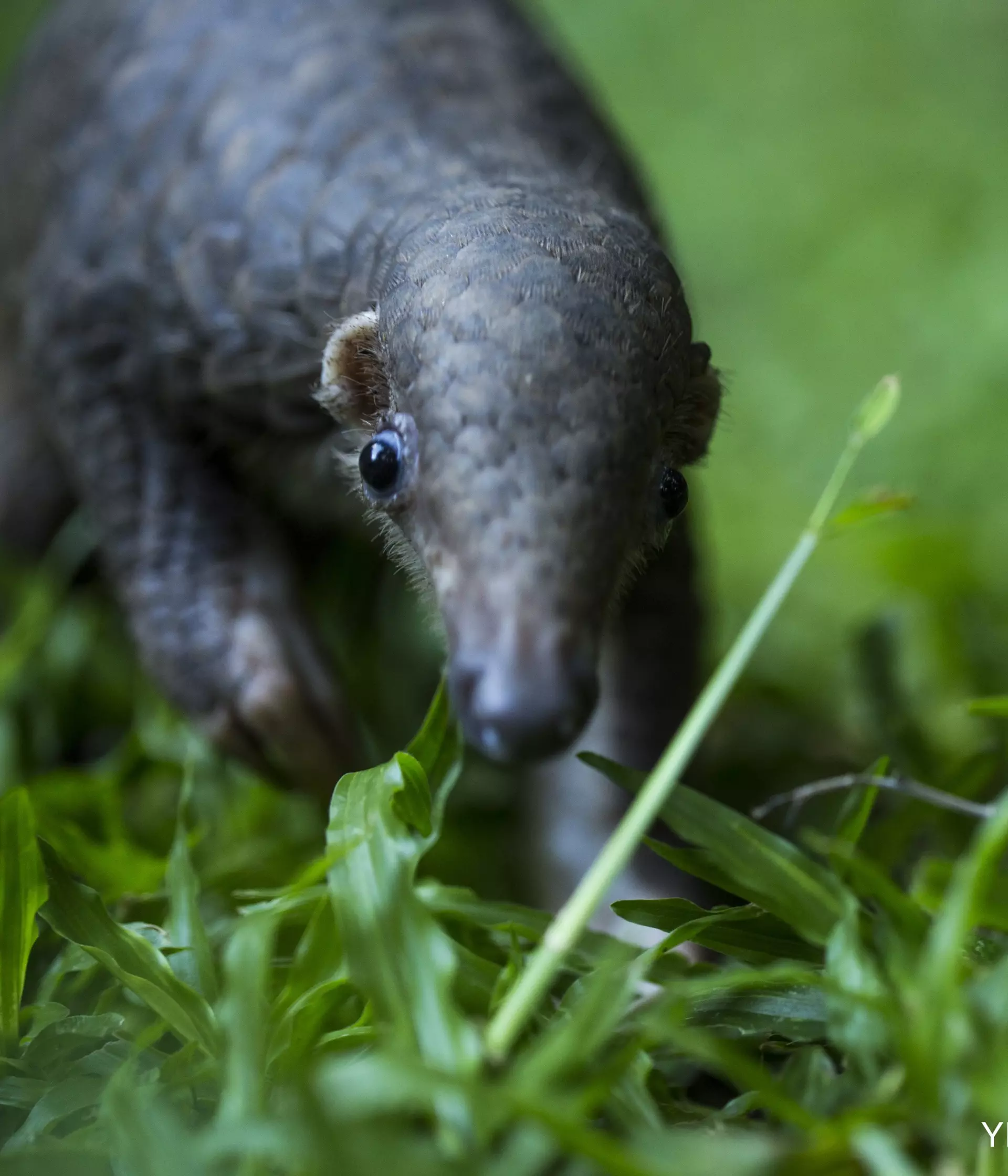Discover the top threats to these scaly anteaters and how fast they’re declining in the wild, as well as what we’re doing to protect pangolins across Asia.
There are currently eight species of pangolin around the world, but these unusual mammals are rapidly disappearing from their homelands in Africa and Asia. The biggest threat to pangolins is illegal and unsustainable hunting by humans for their meat and scales.
It’s estimated that one million pangolins have been poached in the space of a single decade to satisfy demand, making them perhaps the world’s most-poached animal. Although most governments ban international commercial trade in wild pangolins, many animals (both dead and alive) are being illegally trafficked to East and Southeast Asia, where they fetch a high price on the black market.
Why are pangolins trafficked?
Pangolins’ scales and other body parts are used for traditional medicine in China, Vietnam and parts of West and Central Africa – despite there being no scientific evidence of them having any health benefits whatsoever.
Meanwhile, pangolins have long been hunted for food in their native countries, and demand for their meat as a luxury delicacy in China, Vietnam and parts of Southeast Asia is further fuelling pangolin trafficking across international borders.
How many pangolins are left in the world?
We simply don’t know how many pangolins remain in the wild. Their elusive, solitary and primarily nocturnal lifestyles make these animals hard to monitor, and population data is lacking for most species. But all eight species of pangolin are believed to be declining – in many cases, dramatically.
African pangolins are at risk
Four species of pangolin are found in Africa, south of the Sahara: the black-bellied pangolin (Phataginus tetradactyla), the Cape pangolin, aka Temminck’s pangolin (Smutsia temminckii), the giant ground pangolin (Smutsia gigantea), and the white-bellied pangolin (Phataginus tricuspis). All are considered to be at risk of extinction, with the two former species officially listed as Vulnerable in the wild, and the latter two as Endangered.
Asian pangolins are on the brink
Pangolin status in Asia is even more worrying. Of the four Asian species, the Indian pangolin (Manis crassicaudata) is listed as Endangered, while the Chinese pangolin (Manis pentadactyla), Philippine pangolin (Manis culionensis) and Sunda pangolin (Manis javanica) are all now Critically Endangered. Sunda pangolin numbers are thought to have fallen by 80% over 21 years, with the Chinese pangolin and Philippine pangolin believed to be undergoing similar declines within just three generations.
And as Asian pangolin populations plummet, criminal trafficking organisations are increasingly turning their attention to African pangolins to meet consumer demand in Asia. As many as 27 new pangolin trafficking routes are opening up each year.
Other pangolin threats
While human overexploitation is the major threat to pangolin status worldwide, it’s not the only danger these remarkable animals face. Like countless other species, pangolins are at risk from habitat loss and degradation. The conversion of forests to agricultural land is a major driver of this loss, while commercial operations such as logging, mining and dam construction are also pushing pangolins out of their native habitats. Meanwhile, widespread road-building has brought a new threat to pangolins – traffic deaths – as well as opening up previously remote areas of their habitat to hunting and poaching.
What we’re doing to protect pangolins
ZSL is working both behind the scenes and on the ground to combat pangolin trafficking and other illegal wildlife trade – setting up anti-poaching patrols, training law enforcement and improving border controls in some of the world’s key wildlife crime hotspots. Our pioneering pangolin projects range from changing attitudes to wildlife in China to training detection dogs to sniff out smuggled pangolins in Thailand.
Pangolins are a key focus of many of our long-running conservation programmes in Asia, from our work to combat illegal wildlife trade in Thailand’s Western Forest Complex to our community-managed pangolin areas in Nepal.
Support pangolin conservation
We’d love you to be part of our ongoing mission to protect pangolins – and by simply visiting our Zoos, or buying a pangolin souvenir from the ZSL shop, you’re supporting our global conservation work. If you’d like go further and give a one-off or regular donation, we’d be hugely grateful to have your support as we strive to bring pangolins and other threatened species back from the brink.
Pangolin Conservation
Pangolins
Once found thriving in the wild, today all of the eight remaining species of pangolin are rapidly decreasing in numbers. We're working to o keep them a part of a vibrant and balanced world of wildlife and biodiversity.
Protecting Species
From lab to field, hands on and behind the scenes, we’re working at the cutting-edge of conservation identifying species most at risk and creating practical routes to recovery.
